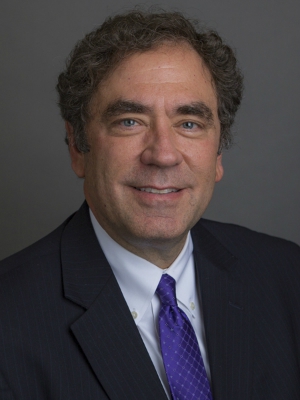Judge Wesley E. Brown, 9/11 and ERISA

On September 11, 2001, I was in Denver, Colorado preparing to argue a case before the U.S. Court of Appeals for the Tenth Circuit. As I was getting ready to go down to the hotel lobby to walk over to court, my partner called me on the phone and told me to turn on the television. That was how I found out about 9/11. Ours was the third case scheduled to be heard that morning. Halfway through the arguments in the first case, the bailiff came into the court room and whispered something to Judge David Ebel, the presiding judge on our panel. As soon as the argument in that case concluded, the marshals evacuated the building and we were left to our own devices for getting home. There were many losses on 9/11. A relatively small one in the big scheme of things, but a loss nonetheless, was that I didn’t get to argue before Senior Judge Wesley E. Brown from the U.S. District Court of Kansas. Judge Brown was, sitting by invitation, one of the three judges on the panel that day in Denver. In preparation for the hearing I read up on the judges who would be hearing the case. I always do that when I find out who will be sitting on my appellate panel or I’m appearing before a judge with whom I’m not familiar. The experiences of other attorneys who have appeared before the same judges you are about to face are well worth knowing. The comments I read about Judge Brown were more than complimentary: they were glowing. Smart, thoroughly prepared, fair, ready to engage the lawyer with questions that went to the heart of the issues, considerate and pleasant. Any sane judge would envy having said about them what attorneys were saying about Wesley Brown. Disappointed though I was, I assumed I would see him when the 9/11 makeup argument was presented. Sadly, when we went back to Denver to argue the case a few months later, Judge Brown didn’t travel over from Kansas. Tapes of the argument were sent for his review. I was let down not to be able to argue to him and respond to what I was sure would be carefully considered and challenging questions. The fact that he didn’t travel to Denver wasn’t too surprising considering that he was 95 at the time. That was five years ago. I was reminded of all this in reading Via Christi Regional Medical Center, Inc. v. Blue Cross and Blue Shield of Kansas, Inc., 2006 U.S. Dist. LEXIS 87194 (D. Kan. 2006). In that case, Judge Brown provides as incisive an analysis of several knotty ERISA issues as you could hope to get from anyone, let alone someone in his hundredth year. The case involves suit by a hospital and mother of a premature baby who were stuck with a bill of about half a million dollars. The self funded medical plan covering the baby switched its funding mechanism over to be fully insured about halfway through the baby’s 5 month hospitalization. Blue Cross was the third party administrator of the plan before the switch and the insurer after. The stop loss coverage for the self funded plan terminated at the same time the plan switched to fully insured status and Blue Cross wasn’t willing to provide coverage for the baby in midstream treatment under the fully insured plan. So the last half of of the baby’s intensive care treatment was not paid by the ERISA plan. To make matters worse, the employer sponsoring the plan declared bankruptcy so there was no money available from that source. The hospital and the baby’s mother sued Blue Cross and the insurance broker that had served as a consultant during the transition period. The ruling resolves the arguments by Blue Cross and the broker that the hospital’s and patient’s claims should be dismissed. The court agreed that the hospital had no ability to assert breach of fiduciary duty claims under ERISA and the language of its assignment of benefits. But the court allowed the mother of the baby to assert those claims. Another key question was whether the fiduciary duty claim is to recover money that represents a “loss to the plan” as required under 29 U.S.C. §1132(a)(2) or whether it results only in a recovery that is a personal benefit to the mother. If the latter, Blue Cross was entitled to have the case dismissed under ERISA’s limited remedial scheme. Judge Brown’s reasoning is precise and accurate. While any recovery may ultimately benefit the patient, the claim for breach of fiduciary duty actually is a complaint about a loss to the plan. The plaintiff’s allegations are that the failure of Blue Cross and the broker to act competently and in the interests of the plan participants and beneficiaries resulted in a failure of the ERISA plan to have the resources necessary to pay claims submitted to it. The court’s recognition that the ERISA plan is a separate entity from the claimant, employer, insurer and third party administrator is key to the analysis. Judge Brown’s work may be most impressive in the last portion of the opinion. There he discusses whether co-fiduciaries have a right of contribution or indemnity under ERISA. Faced with a split in federal case law, Judge Brown reviews Cort v. Ash, Supreme Court precedent, to determine whether a private remedy should be implied in a statute. Supplementing ERISA with the common law of trusts, the ruling approves such a right. In addition to these three issues, Judge Brown tackles several other legal problems in Via Christi. It’s an impressive opinion. My final thought after reading the case: I really did miss out in not being able to argue before Wesley E. Brown. I’ll post a copy of Via Christi in the website library. UPDATE: here is the decision.
